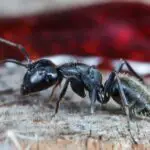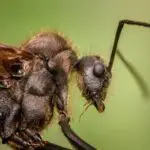Do Ants Have Eyes?
Unlike most insects, ants have eyes. They have at least two large compound eyes, and three simple eyes. The compound eyes allow them to distinguish between light and dark. They also help the ants to find food and their nests. They also use their eyes to detect ultraviolet light.
The compound eyes are composed of hundreds of ommatidia. These are small lens-like photoreceptors, each of which is a single-cell photoreceptor. These are the structural units of vision for all ants. The number of ommatidia in an ant’s compound eyes is directly related to the size of the ant. The smallest species have less than 150 ommatidia, while the largest species have over 650.
Ants’ eyes are complex, but they are not as good as the eyes of other insects. They have specialized photoreceptors in their compound eyes, which help them to detect light, motion, and color. Ants use their eyes to locate food, find their way back to their nests, and alert them to predators.
In addition to the photoreceptors in their compound eyes, ants also have ocelli. Ocelli are small photo-receptors that have simple lenses. They are found in many flying hymenopterans, but are most prominent in flying ants. The ocellar rhabdoms are oriented dorsal and posterior, but in alate male and female ants the ocelli are oriented ventrally and anteriorly.
Ants also have a subgenual organ below the knee in the tibia of each leg. This organ is capable of detecting vibrations from solid objects, such as rocks and leaves, and converting them into electrical signals for the brain.








